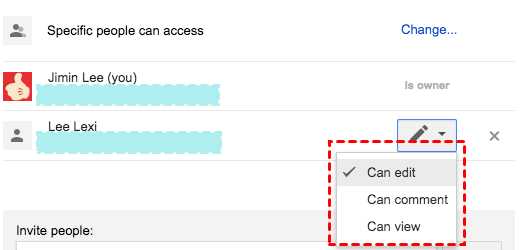Contents:


The different approaches to electronic payments include card payment, mail order, and online payment. Online transactions are a daily activity for almost everyone today. With the introduction of the Internet, online transactions became easy. Most product and service companies made their web presence prominent and started interacting with their customers online.
This was an overview of the disadvantages of electronic payment systems. While their advantages outweigh the risks involved in their use, we should be aware of these potential threats and take the safety measures needed. One can find many different international payment systems in the market.
EFTs make sense when someone doesn’t want to use a https://1investing.in/ or credit card. This process gives them another opportunity to become a customer. Any transaction that involves more than $10,000 cash with an electronic funds transfer gets reported to the Internal Revenue Service in the United States.
Consultation: Stamp Taxes on Shares modernisation – GOV.UK
Consultation: Stamp Taxes on Shares modernisation.
Posted: Thu, 27 Apr 2023 12:51:22 GMT [source]
And the whole idea of making profits is possible only if your business offers its customers the ability to make payments. With technological advancements in recent years, online payments have become an inseparable part of the e-commerce industry. And, why wouldn’t they, considering the many benefits that come with online payment features. Using e-payment systems within your business come at a cost, as you’ll need to protect financial information stored in your computer systems. Businesses with in-house electronic payment software will be forced to pay out for installing and maintaining payment-security technologies.
Additional Cost and Effort
Setting up the account, accessing the Internet, familiarizing oneself with the interface and operating it efficiently, involves additional effort, and may be cumbersome for some. Faster electronic payments, like virtual cards, empower businesses to improve security, visibility, and efficiency all while lowering costs and saving time on manual processes. Unless you initiate an electronic funds transfer to pay yourself or transfer money between accounts, there is no way to verify that the intended recipient got the cash. Someone with a fake ID could collect the money without going through an extensive verification process. Some transactions that use this method are particularly risky, such as wiring money to an office that pays proceeds in cash.
An electronic payment is a digital transaction between two parties, with e-payment types including ACH, cards, bank transfers, digital wallets, mobile pay, and more. There are a number of service providers on the market, but arguably the most important factor is the number of card brands that they accept. You’ll want your business to accept a range of options, from an American Express credit card to Apple Pay on a customer’s phone. Of course, the more payment options you can accept, the more customers you can serve and the more transactions you can process. Finally, accurate transaction records may be provided via electronic payment systems, which can be useful for tracking costs and account reconciliation. Businesses, who may utilize the data to understand their financial performance better and make more educated decisions, may find this to be very helpful.
With the help of the clearing house, eChecks process safely, securely, and quickly, generally via the internet, but also sometimes via telephone or fax. The procedure for businesses to do this on a customer’s behalf is straightforward, with the business providing the bank with a reference number that is then factored into the transaction. Sometimes, the business will have a different bank than their customer.
Systems may not come under direct attack, but phishing techniques can be used to obtain IDs and passwords. Once a hacker has these details, e-payments make it possible to process multiple payments before the genuine account holder notices. However, another factor you should consider is how much it will cost you to maintain your e-payment processor. Some providers charge a fixed amount for a card reader as well as a certain percentage of each transaction, whereas others offer a monthly rental price.
With electronic payment systems, you do not have to wait in long queues at ATMs or bank branches to withdraw cash. The lines at checkout counters are also shorter, with each transaction taking less time. You can also use these online payment systems to pay for a wide variety of products on online shopping websites, thus eliminating the need to visit stores physically. The various types of e-payment include credit and debit cards, mobile wallets, UPI, internet and mobile banking, and many more. You simply require a bank account and an internet-enabled device to leverage e-payment solutions and pay for various products and services. The use of electronic payment systems has skyrocketed in recent years, and this has been further exacerbated by the pandemic.
When you automate electronic payment processing, you gain greater insight into each step of the invoicing process. Automated processes provide greater control over outgoing cash flow compared to tedious, error-prone manual processes. This combination of process transparency, greater control over payments, and reduction of manual tasks means that it will be easier for your AP department to identify suspicious or fraudulent activity. There is a myriad of problems that can occur when using an electronic funds transfer to send money. Numbers can get transposed when writing down account information.
Advantage: Reduced Transaction Costs
The bigger issue is that cards are a major risk for fraud, with the same numbers able to be used for payment over and over again – whether these payments are authorized or not. A 2021 survey report by Stampli and Treasury Webinars, “How & Why Companies Choose Payment Types” looked at different payment options. The survey found that credit cards were the most popular way for companies to pay their suppliers. Join us as we explore the different types of electronic payments and offer Stampli Card, our virtual payment solution. The primary downside of using a payment processor is that it will come with a charge. As we’ve said, this could be a monthly rental fee or simply a percentage of each transaction.
Since you can pay for goods or services online at any time of day or night, from any part of the world, your customers don’t have to spend time in a line, waiting for their turn to transact. Nor do they have to wait for a check to clear the bank so they can access the funds they need to shop. E-payment also eliminates the security risks that come with handling cash money. E-currency is a comparably new phenomenon in the sphere of electronic payment systems.
Going Off-Grid Is a Piece of Cake With This Luxurious School Bus … – autoevolution
Going Off-Grid Is a Piece of Cake With This Luxurious School Bus ….
Posted: Mon, 01 May 2023 19:30:01 GMT [source]
Unlike paper checks that take time to write, process, and eventually post to your supplier’s bank account, electronic payments are fast, transparent, and secure. Paying suppliers on time and offering them complete visibility into the payment process, will naturally improve your relationships with suppliers. Beyond that, streamlining the payment process with electronic payments will reduce the number of late payments and therefore lower the number of supplier inquiries to your AP team. That’s a big time save considering 43% of AP teams spend over 6 hours a week answering vendor questions regarding payments.
Tips to follow while making online payments
It’s often a similar fee to that of a bounced check, although it is usually a lower amount. Merchants will pass this cost along to a customer when it occurs if they are at fault for the problem with the transaction. Electronic payment systems are dependent on technology hence, they can be vulnerable to system failures, technical glitches, and cyber-attacks. No matter which payment method you choose, Stampli has you covered with its payment agnostic software. Overall, payment service providers are an emerging service worth trying for the right kinds of companies, though there are some drawbacks worth noting.
This method tends to be used by smaller businesses or freelance workers. We’re transforming accounting by automating Accounts Payable and B2B Payments for mid-sized companies. Electronic payments are much more efficient and safe than their traditional, paper-based counterparts. EPayment methods and systems offer multiple ways of securing your payments, such as payment tokenization, encryption, SSL, and more. If you paid with an electronic funds transfer and have a dispute with a merchant, then you have the right to have your bank investigate anything that seems incorrect or unauthorized.
How Do Electronic Payment Systems Work?
What’s more, e-payments eliminate the security risk of handling large amounts of cash. The disadvantages of payment systems should also include limited access to services for certain categories of customers. For example, some EMIs do not send payment cards to certain countries . Another important disadvantage is the higher cost of services for non-residents. It has become evident that remote and hybrid work environments are here to stay for businesses around the world.

And we found that was just the case with one of our MineralTree clients. The House of Cheatham processes more than 750 invoices a month, averaging about 6 hours a week just to prepare payment runs. By switching to an electronic payment solution, they’re able to prepare their weekly payment run in just 5 minutes. Many a time while using e-payment services we are liable to pay service fees or a convenience fee which adds to our expense. As people are getting more indulged in e-payments, almost every payment service provider has started giving exciting offers helping people get good deals.
The preference for physical payment methods like cash and cheques is at an all-time low, and it doesn’t look like that trend is going to reverse anytime soon. It’s not just consumers either; business owners are moving away from petty cash and embracing e-payment systems such as prepaid business cards. The convenience, speed, security, accuracy, cost-effectiveness, and record-keeping that electronic payment systems offer over conventional payment methods are summarised above. Electronic payment systems are a desirable alternative for both consumers and companies because of these advantages. Electronic payments have proven to be incredibly important to streamline accounts payable processes. In this blog, we’ll explore the top 7 advantages and benefits of electronic payment systems for your business and your suppliers.
Consumers can pay for products and services thanks to the delicate relationship between the electronic payment system and electronic commerce. The following prerequisites must be fulfilled to integrate the electronic payment system with the present payment system. B2B e-commerce, or electronic transactions involving business organisations, is connected to EDI.
Advantage: Increased Speed and Convenience
With financial institutions working on similar lines, people around the world began to carry out financial transactions over the Internet. Credit and debit cards became commonplace and gave impetus to electronic payment systems. Omariba, Masese, and Wanyembi note that depository institutions need to resolve many cases of violation the confidentiality of personal and financial data of clients because of using electronic payment systems . Another problem is the appearance of more regulations to control the privacy and security issues that are oriented to protect clients of depository institutions, but they can limit the functioning of these organizations . On the other hand, such issues as privacy and security still remain influential to prevent many bank clients from using the advantages of electronic payment systems. However, the situation tends to change with the focus on new alternative and time-efficient operations proposed in depository institutions.
- However, electronic payment systems come equipped with security protocols that ensure the safety of your funds.
- One of the main disadvantages of online payments is the technological illiteracy among many people, especially the older generation.
- These electronic funds transfer advantages and disadvantages are essential to consider because merchants and customers must find a place of common ground.
- Mostly, electronic cash transactions are based on cryptographic systems.
- Finally, accurate transaction records may be provided via electronic payment systems, which can be useful for tracking costs and account reconciliation.
And with remote invoice approvers and payment authorizers, traditional manual processes are no longer feasible, causing invoice and payment processing delays. This slows down the entire payment processing workflow and creates a disorganized structure for approving payments. Meanwhile, an electronic payment platform is entirely digital, allowing approvers to authorize payments from anywhere in the world, at any time. And not only that, invoices are coded and captured in a central system, organizing invoice processing and making it easy for authorizers to approve, pay, and execute payments to suppliers. However, these electronic payment systems have a number of a number of disadvantages also.
Yukon Gold Casino Rewards Review – Is It Legit? 150 Free Spins & Bonus – Outlook India
Yukon Gold Casino Rewards Review – Is It Legit? 150 Free Spins & Bonus.
Posted: Thu, 04 May 2023 14:28:30 GMT [source]
And it’s this truth that is one of the main reasons why online shopping is continuing to grow in popularity. Payments can also be made at a faster rate, which can improve supplier relationships. Considering that 58% of companies noted that supplier relationships became more strategically important over the last year, having an efficient AP process in place is a necessity in today’s marketplace. There have been many incidents in which cybercriminals have manipulated people and money has been looted.
Unauthorized disadvantages of electronic payment system may carry out transactions in your name during that period. In case of e-banking or online financial transactions, you need to be a registered user with the respective website. This gives rise to the need of password protection when handling financial accounts online. Also, if you are transacting with multiple financial institutions or have accounts with multiple banks, the risk of privacy breach is multiplied.
In a survey conducted in 2020 to analyze the changing consumer sentiments concerning the COVID-19 pandemic in India, the respondents over the age of 40 were more inclined towards using credit and debit cards for payment. Contrary to this, UPI and online wallets were more popular with younger consumers. E-payment systems come with an increased need to protect sensitive financial information stored in a business’s computer systems from unauthorized access. Enterprises with in-house e-payment systems must incur additional costs in procuring, installing and maintaining sophisticated payment-security technologies.
With online payment features, you can offer your customers a wide variety of payment options to choose from. People have their own preferences, and if they can find that option while purchasing from you, there are obviously more chances of them actually getting through with the transaction. Although digital solutions are not immune to hackers and security breaches, most electronic payment providers also have a host of data experts and engineers working to keep your payment information safe. To make sure that your online transactions are solid, it is essential that you observe strict security policies. If password is capable of being hacked, it can mean serious fiscal loss for you. Banks or financial institutes that have your financial information can expose it to cyber-terrorist.

